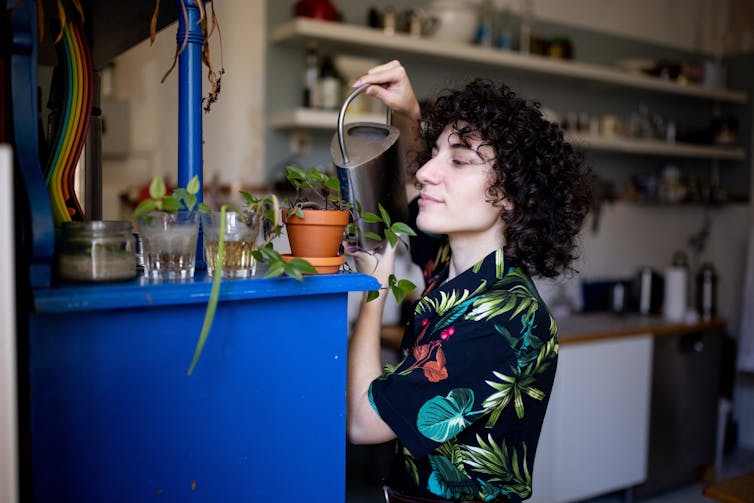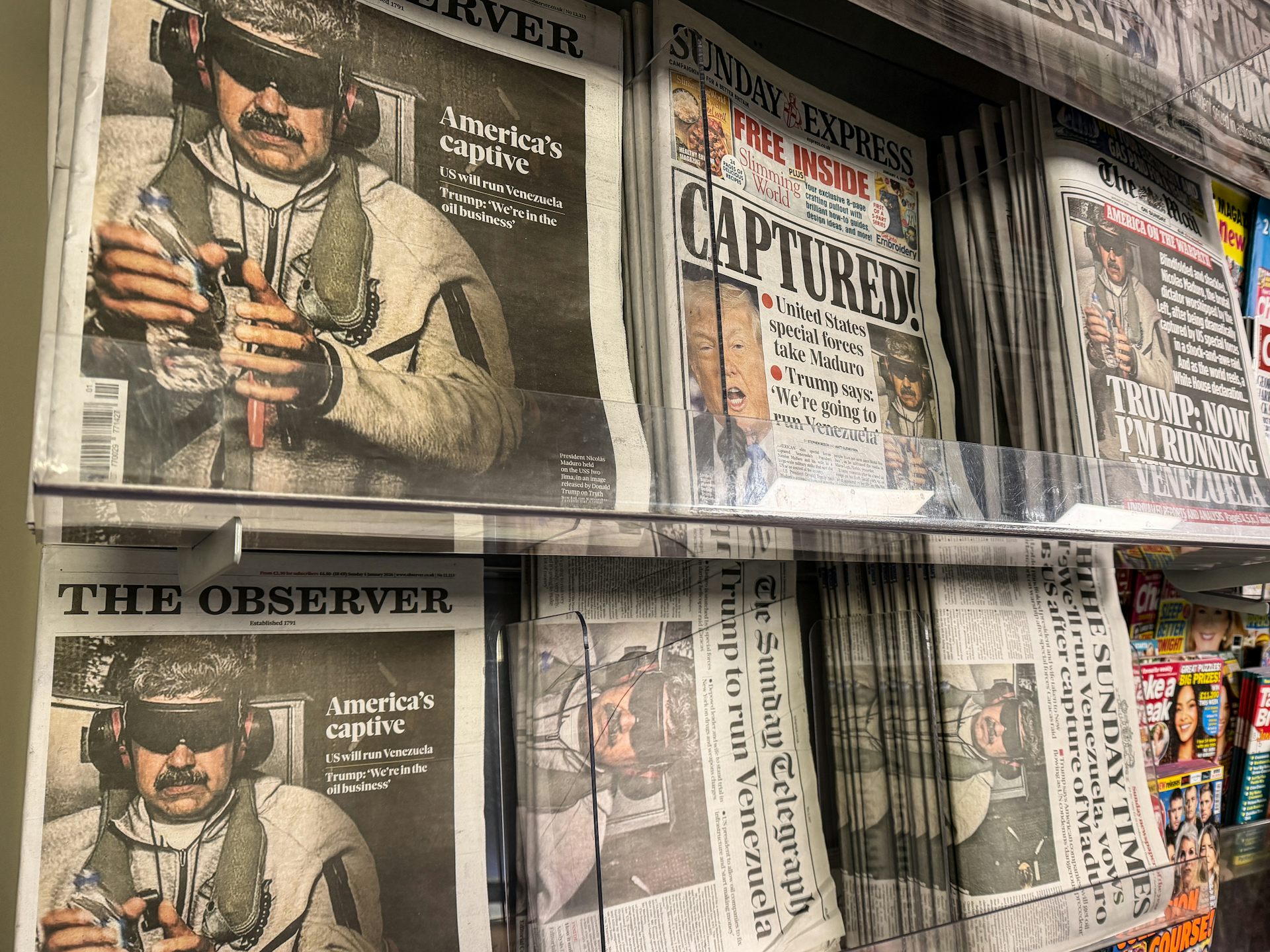Transform the daily grind to make life more interesting – a philosopher shares 3 strategies to help
A shift in mindset as you go through your day-to-day can help you cultivate a psychologically rich life.

Imagine it’s Monday morning, too cold and too dark, but once that alarm goes off, you know you’ve got to rally. The kids have to get to school. You’ve got to get to work. And, of course, your ever-growing to-do list hangs over your head like a dark cloud, somehow both too threatening to ignore and too threatening to start its tasks.
On days like this, you may be grateful simply to make it through. But then it begins, all over again.
While you can’t escape the grind, you can transform it. The latest psychological research on the good life points the way: By shifting your mindset, you can make your day-to-day more interesting and create psychological richness within your life. Psychological richness describes a robust form of cognitive engagement. It’s distinct from happiness and meaning, but just as important to the good life.
In collaboration with Shigehiro Oishi and his research lab, I’ve investigated whether the field of positive psychology has largely overlooked an important dimension of the good life. As the philosopher on our team, I had two directives. First, I helped to define the concept of psychological richness and understand what distinguishes it from happiness and meaning. Second, I set out to explore why psychological richness is valuable.
Our initial studies found that people value experiences that stimulate their minds, challenge them and generate a range of emotions. Many would choose a life full of these experiences, which we describe as psychologically rich, over a happy life or a meaningful life.
This insight points to the important role psychological richness can play within the good life, but it stops short of explaining why it’s good and why people ought to make space for psychological richness within their lives. These are value-laden questions that can’t be answered through empirical research. Their answers are found instead through philosophical analysis.
My philosophical analysis suggests that psychological richness is good for you because it’s interesting. My book, “The Art of the Interesting: What We Miss in Our Pursuit of the Good Life and How to Cultivate It,” shows how to add psychological richness to your life by making it more interesting.
One of the easiest ways to do this is by embracing a mindset characterized by curiosity, creativity and what I call “mindfulness 2.0.” When you bring these three perspectives to your day-to-day, you transform the grind into endless opportunities to experience the world as interesting. You develop the capacity to enhance your own life.
Mindfulness 2.0: Noticing without judging
What I call “mindfulness 2.0” means bringing nonevaluative awareness to the world around you – paying attention without judging.
Familiar from mindfulness practices, it’s a form of noticing that brings forth details you typically overlook: the texture of a houseplant’s leaves, the faces of the strangers you pass on the sidewalk, the differing heights of the cans on a store shelf. By bringing these details into your awareness, you stimulate your mind, allowing you to engage mentally with your surroundings in an active manner. Noticing things through mindfulness 2.0 is the first step toward having an interesting experience.
A good place to practice mindfulness 2.0 is during your morning commute. Because it’s routine, you probably don’t feel the need to engage much with the details of what you are doing. Instead you’ll find other ways to pass the time, such as listening to the news or your favorite podcast. These activities distract you from the otherwise boring commute by disengaging you from it.

But you can also get through the commute by engaging with it to make it less boring. Here’s where the power of mindfulness 2.0 kicks in. Through actively noticing things around you – be it the people clustered at the bus stop, or the traffic patterns created by a stoplight, or a flock of birds swooping overhead – you engage your mind and set yourself up to experience the interesting.
Curiosity: Exploring through questions
Curiosity isn’t just for kids. No matter how much you know, there’s always something to be curious about – especially if you’ve learned to notice the details through mindfulness 2.0.
Say you’ve noticed, during your commute, the group of people gathered around the bus stop. Now let your curiosity take off: Was that bus stop always there? How long has that exceptionally weird real estate advertisement been stuck on the seatback? So many people lined up this cold morning. You might wonder if you’d feel a little more connected if you were with them. But then you notice that no one is talking. Do they ride the same bus together, every day, without acknowledging each other?
Through asking questions, you ask your mind to consider something it hadn’t before. You create new thoughts, and if you let your mind keep going, you’ll have an interesting experience, all the while making that same commute. Even better, you’ll have created that interesting experience on your own. You’ve harnessed an ability to enhance your life, an ability that’s completely within your control.
Creativity: Trying something new
While people often think of creativity as a talent, native only to artists or inventors, everyone has the ability to be creative. Creativity is a skill that involves forming new connections with your mind. You’re creative whenever you do something new or different. Whether it is painting a brilliant landscape or wearing a new color combination, developing a new dish or simply tweaking a recipe, it all falls under the umbrella of creativity.

When you are creative, in big or small ways, you generate novelty within your life, and this puts you on the path toward experiencing psychological richness. Novelty all but forces the mind to think and feel in new ways, stimulating that robust form of cognitive engagement that brings the interesting.
Even just a little bit of creativity will bring novelty to your day-to-day routine. Wear something you don’t normally wear. Add a little flair to your handwriting or choose a different colored pen to write with. Change the patterns on your screen saver. Notice the impact these little tweaks have on your day. Little by little, they’ll add up to make your day just a little more interesting.
Everyone’s experience of what’s interesting is unique. There’s no one interesting experience for all of us, because the interesting depends entirely on how our minds engage, react and respond. Through developing mindfulness 2.0, and bringing curiosity and creativity to your experiences, you train your mind to engage, react and respond in ways that will transform any experience into an interesting one.
This is the power a mindset can bring. It’s a capacity to enhance our lives that anyone can develop.
Lorraine Besser received funding for this research from the Templeton Foundation, in coordination with St. Louis University, and from Middlebury College.
Read These Next
Wearing a weighted vest can promote bone health and weight loss, but it’s not a cure-all
Are weighted vests more than a fitness fad? A health and exercise expert explains their potential benefits…
How tourism, a booming wellness culture and social media are transforming the age-old Japanese tea c
Social media has turned traditional Japanese matcha into a commercial trend, though its roots lie in…
RFK Jr. guts the US childhood vaccine schedule despite its decades-long safety record
In an unprecedented move, health officials cut the number of vaccines routinely recommended for children…






